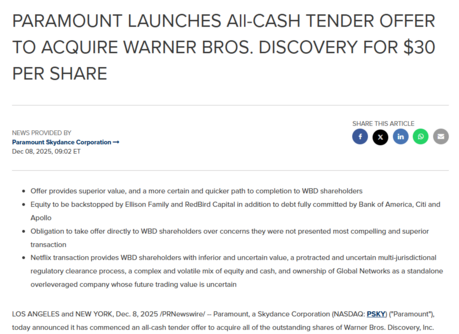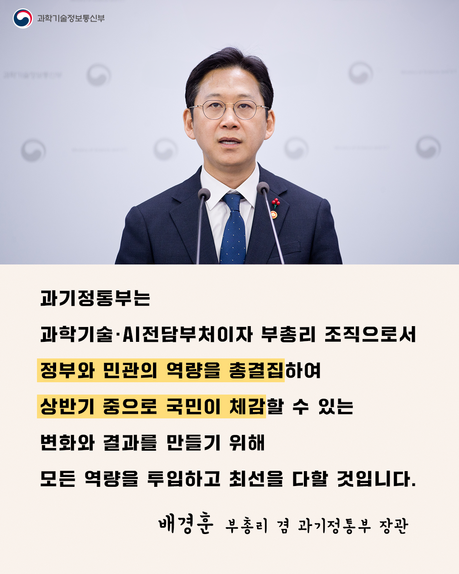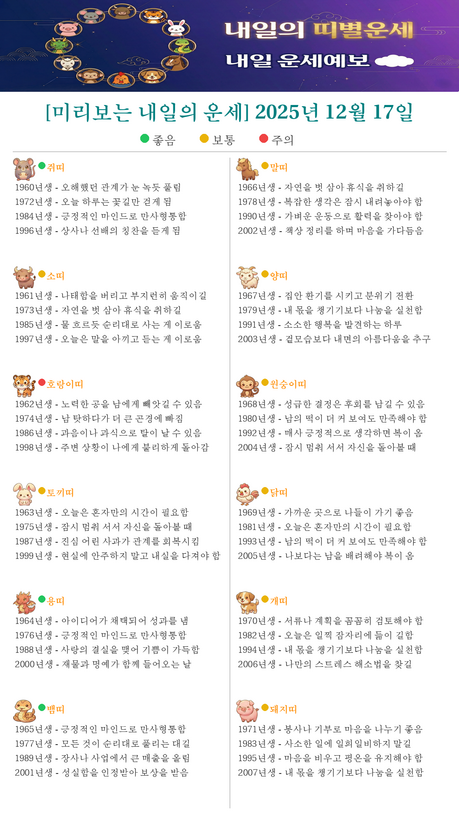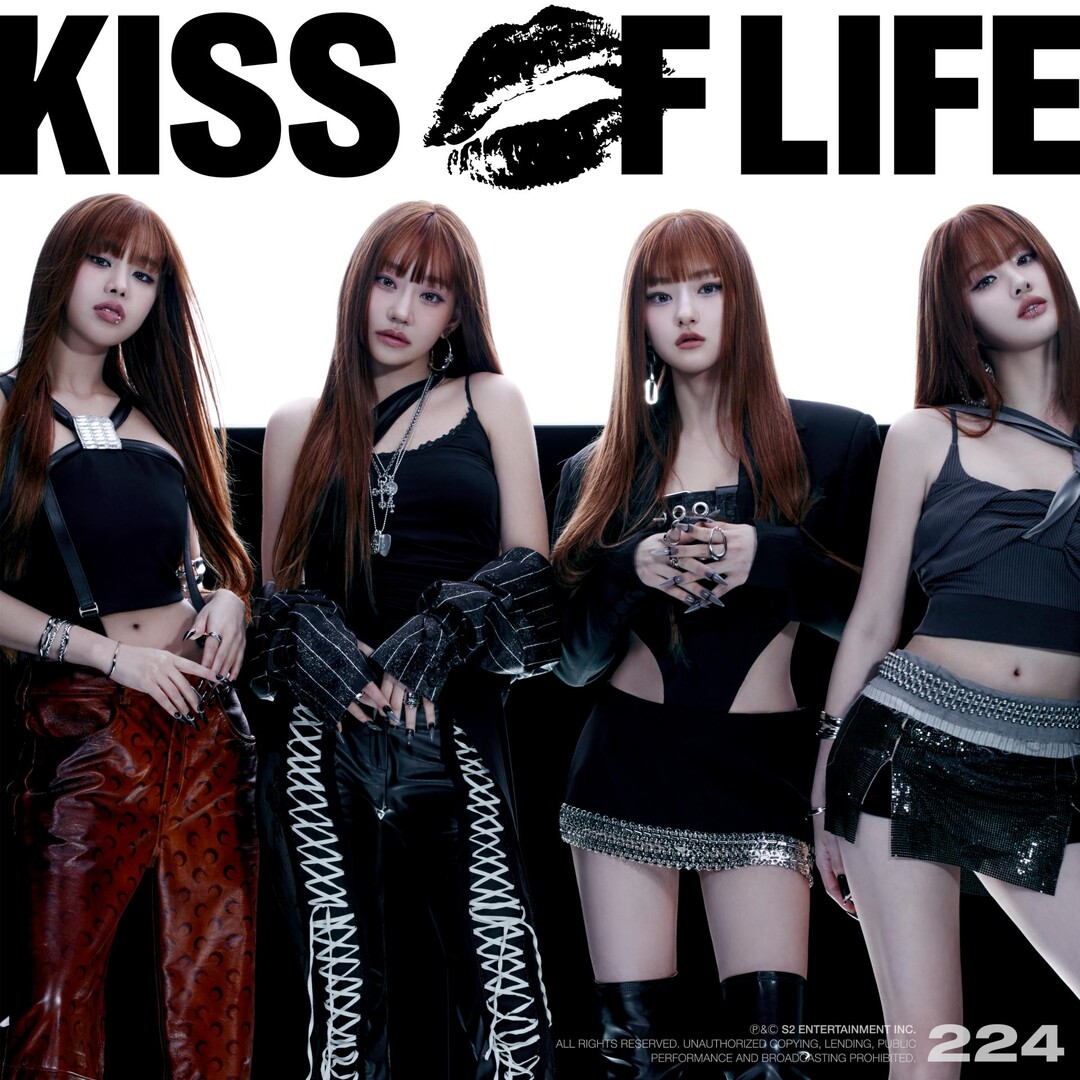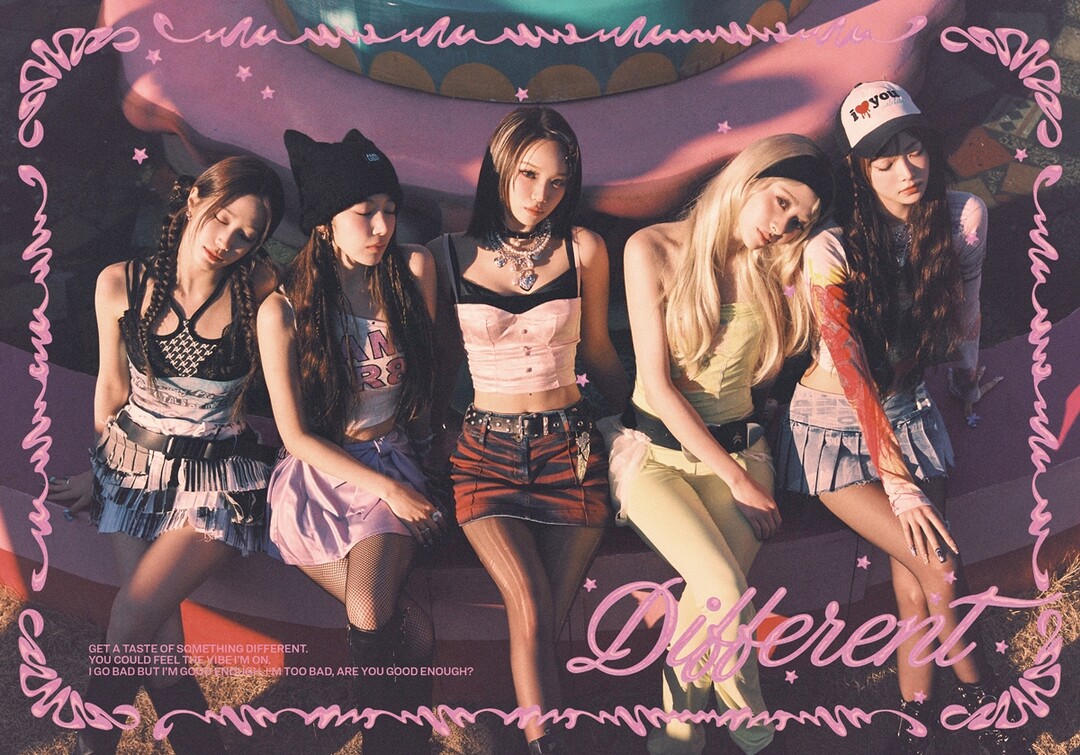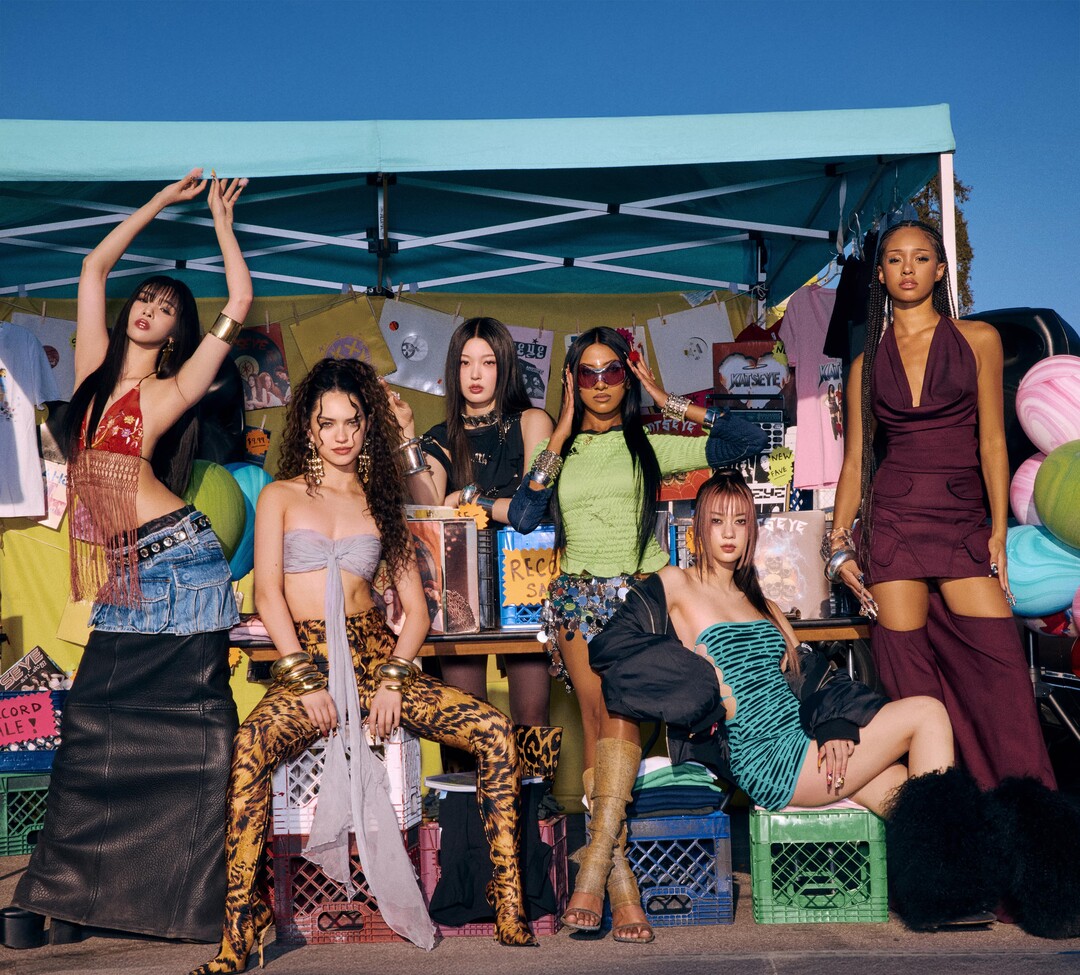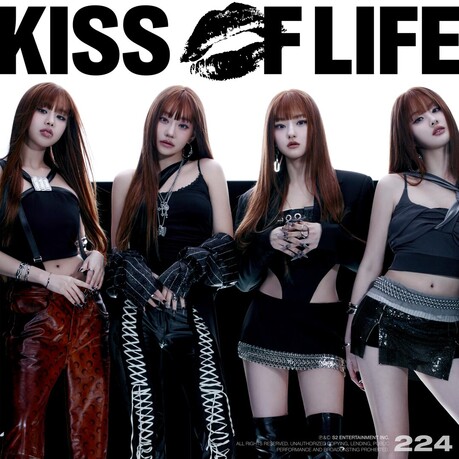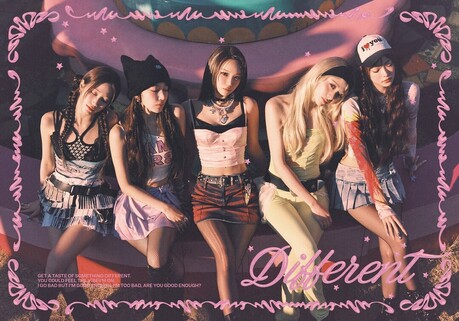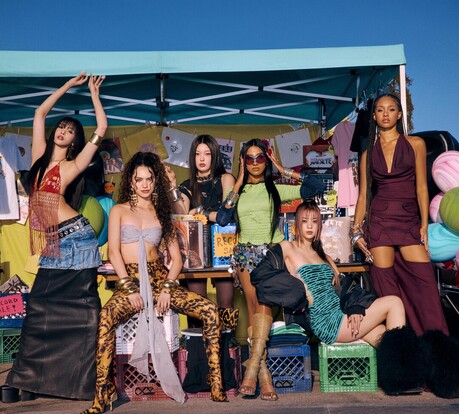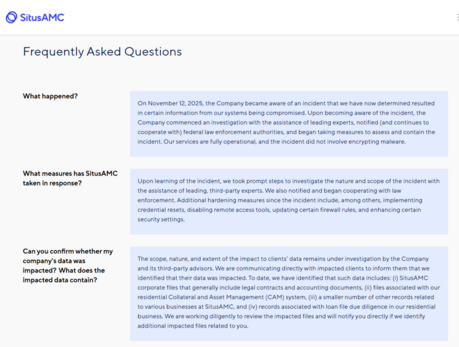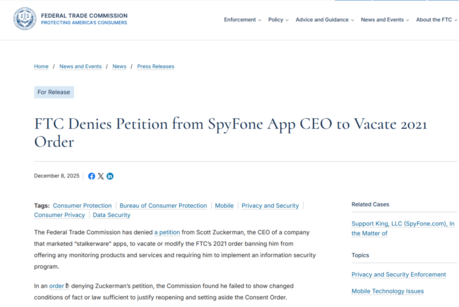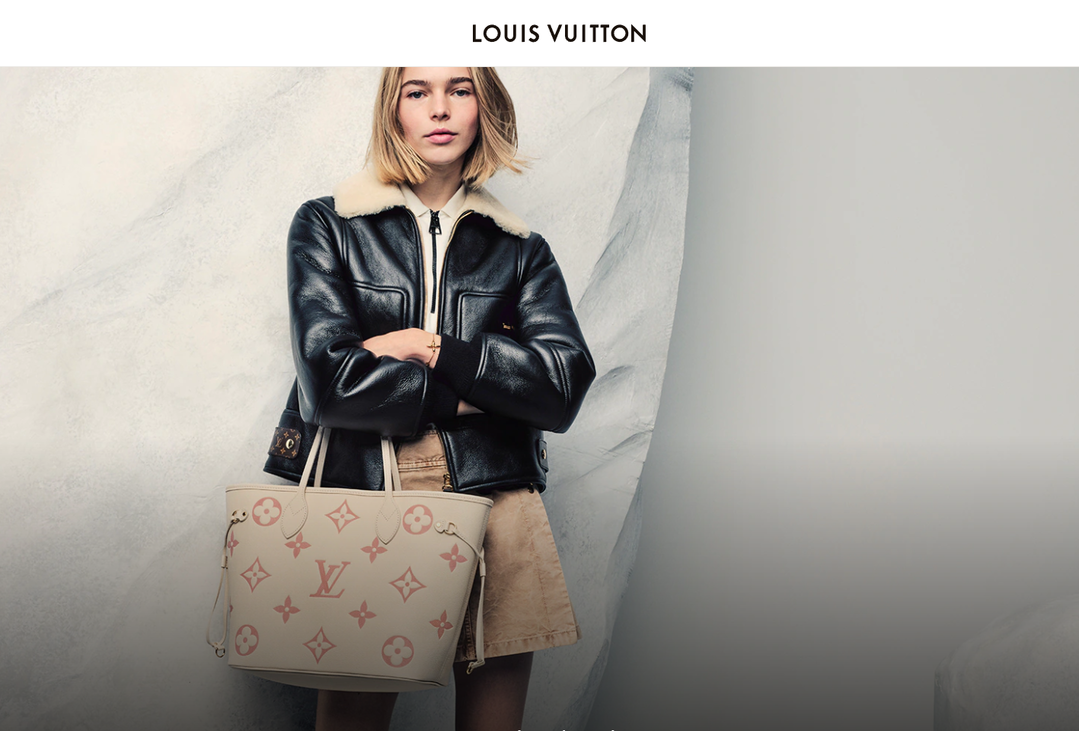
루이비통은 19세기 프랑스에서 창업되었습니다. 그 당시, 루이비통은 여행용 가방과 짐을 운반하는 기술적으로 고급스러운 방법을 찾고 있던 상인이었습니다. 1854년, 그는 파리에서 첫 가방 공방을 열었고, 이후 루이비통 브랜드는 창업자의 이름을 따서 만들어졌습니다. 루이비통의 창업자인 루이비통은 가죽제품 기술자로서, 여행용 가방과 트렁크 등을 전문으로 제작하였습니다. 초기에는 가방, 짐, 가죽 제품 등 여행 용품을 제조하여 판매했지만, 지금은 가방, 지갑, 의류, 액세서리 등 다양한 제품을 판매하고 있습니다.
루이비통은 현재 LVMH 그룹의 일부로 소속되어 있습니다. 루이비통은 창업 이후, 많은 유명인사들에게 인기를 끌며, 19세기 말부터는 전 세계적으로 인기를 얻기 시작했습니다. 루이비통의 대표적인 상품 중 하나인 "LV" 로고가 새겨진 가방은 패션 아이콘이 되었으며, 다양한 디자인과 컬러로 제공되어 많은 팬층을 확보하고 있습니다.
루이비통, 탄생 이야기
루이비통은 1821년 프랑스의 어느 작은 마을에서 태어났습니다. 그는 어린 시절에 우물에서 어부로 일하면서 가난한 생활을 했습니다. 그러나 그는 머리가 좋았고, 패션과 가죽에 대한 뛰어난 감각을 가지고 있었습니다. 그리고 이러한 능력들이 그의 창조적인 직감과 결합하여, 세계적인 패션 브랜드로 성장할 루이비통을 만드는 데 기여하게 되었습니다.
어린 시절부터 가난한 환경에서 살았던 루이비통은 13살에 집을 떠나 파리로 갔습니다. 그가 집을 떠나는 이유는 가죽공예사의 제자로 배우기 위해서였습니다.
루이비통이 파리로 가기 위해서는 도보나 마차를 이용할 수밖에 없었습니다. 그러나 도보로는 멀고 위험했기 때문에, 마차를 타고 가야 했습니다. 이를 위해서는 돈이 필요했지만 루이비통 가족은 가난했기 때문에 돈을 제공해줄 수 없었습니다.
그래서 루이비통은 가난한 형제 자매들과 함께 길거리에서 먹을 것을 구하기 위해 일을 하며 생계를 유지했습니다. 이런 상황에서도 꿈을 포기하지 않았던 루이비통은 13살에 마을을 떠나 파리로 가는 길을 택했습니다. 마차를 타고 이동하면서 여러 가지 어려움을 겪었지만, 최종적으로 파리에 도착하게 되었습니다.
파리에 도착한 후, 그는 가죽공예 가게에서 일하면서 기술을 익혔습니다.
루이비통은 16살 때 파리에서 가죽 가방과 여행용 가방을 만드는 회사인 "파리시앙 언더월드(Parisian Underworld)"에 취직했습니다. 이 회사에서 그는 유명한 상인들과 고객들의 가방을 수리하고 디자인하며, 이를 통해 가죽공예 기술과 비즈니스 관리에 대한 실무 경험을 쌓았습니다.
파리시앙 언더월드(Parisian Underworld)
"파리시앙 언더월드(Parisian Underworld)"는 19세기 말부터 20세기 초까지 파리에서 유행했던 가방과 가죽 제품 전문 회사 중 하나였습니다. 그러나 그 이름에서 알 수 있듯이, 이 회사는 불법적인 방법으로 생산을 진행하고, 유통 경로를 갖추지 않고 판매를 진행했기 때문에 당시 파리의 언더월드에서 활동하던 사람들이 만든 회사로 알려져 있습니다.
파리의 언더월드는 19세기와 20세기 초반의 파리에서 발전한 범죄와 불법 활동이 일어나는 지하 세계를 의미합니다. 이 지하 세계는 급격한 인구 증가와 도시의 불균형적인 발전으로 인해 생겨났습니다.
19세기 후반 파리의 언더월드는 범죄와 불법 활동의 중심지였습니다. 이 지역은 거지, 범죄자, 마약상, 매춘부, 도박꾼 등이 모여 사는 비정상적인 사회였습니다. 그들은 자신들만의 규칙과 제도를 가지고 살았으며, 법과 사회의 통제를 받지 않는 자유로운 환경에서 살았습니다.
파리의 언더월드는 그 중에서도 특히 유명한 지역 중 하나였습니다. 이 지역은 파리의 중심지인 생빈지구와 몬마르뜨 지구 사이에 위치하고 있었습니다. 그곳에서는 가난하고 불법적인 일을 하는 사람들이 많이 모여 살았으며, 그 중에는 가죽공예사, 가방제작자, 신발제작자 등과 같은 솜씨 좋은 사람들도 있었습니다.
파리시앙 언더월드는 이런 지하 세계에서 가죽 가방, 여행 가방, 모자 등을 제조하던 회사였습니다.
루이비통은 이곳에서 가죽 가방과 여행용 가방을 만드는 회사인 파리시앙 언더월드에서 일을 하게 되었습니다. 이 회사에서 일한 루이비통은 가죽 가방과 여행용 가방을 제작하는 데서 기술을 배우게 되었고, 나중에 자신의 브랜드를 창업할 때 이러한 경험이 큰 도움이 되었습니다.
루이비통 공식 홈페이지 속 '루이비통 이야기'
트렁크 장인이 되겠다는 열여섯 살 루이비통(Louis Vuitton)의 결심은 자신의 인생뿐 아니라 아들, 후대의 운명을 바꾸어 놓는다. 루이비통의 트렁크 제작 역사는 회사 설립 이전으로 거슬러 올라간다.
1837년, 열여섯 살이던 루이비통은 파리 땅을 밟았고, 무슈 마레샬(Monsieur Maréchal)의 견습생 생활을 시작한다. 당시 마차와 배, 기차가 주요 운송 수단이었고, 여행 가방은 거칠게 다루어졌다. 여행객은 장인들에게 개인 소지품을 보호하면서 짐을 쌀 수 있는 방법을 의뢰했다.
슈 마레샬의 파리 공방에서 일하던 루이비통은 얼마 지나지 않아 신임을 얻었다. 이때의 이력이 루이비통의 특별한 거래가 시작된 뿌리다.
가족의 거처이자 루이비통 메종이 탄생한 요람인 아니에르는 1859년 이래, 루이비통 가문의 개인적인, 상업적인 성공의 상징으로 자리 잡았다.
그는 이후 1854년, 즉 33살 때, 자신의 이름을 딴 "루이비통(Louis Vuitton)"이라는 회사를 창업했습니다. 루이비통이 창업 당시에는 돈이 많이 없었습니다. 그러나 그는 그의 직업인 가방제작 기술과 디자인 감각을 이용하여 제품을 만들었고, 주문을 받아 제작하는 방식으로 사업을 시작했습니다.
이 회사에서 그는 직접 수제로 여행 가방과 가죽 제품을 만들어 판매하였으며, 뛰어난 디자인과 품질, 기능성 등이 고객들에게 인기를 끌었습니다. 이를 통해 그는 높은 수준의 고객 만족도와 로열티를 얻으며, 이후 루이비통은 전 세계적으로 유명한 패션 브랜드로 자리매김하게 되었습니다.
루이비통의 첫 제품
루이비통의 첫 제품은 1854년에 출시된 Trianon 트렁크이며, 가격은 34 프랑이었습니다. 당시 이 제품은 고품질의 가죽과 방수처리된 코팅된 천을 사용해 만들어졌으며, 내부는 섬유유리로 강화되어 내구성과 방수성이 뛰어나기로 유명했습니다. 이러한 혁신적인 디자인과 고품질의 제품으로 루이비통은 금방이라도 성공적인 사업을 시작할 수 있었습니다.
![▲루이 비통이 최초로 만든 사각형 트렁크 ‘그레이 트리아농 캔버스’(Grey Trianon Canvas trunk, 1858년 생산) * 출처: [네이버 지식백과] 루이비통 [LOUIS VUITTON] (세계 브랜드 백과, 인터브랜드)](https://metax.kr/news/data/2025/02/22/p1065581721920960_910_thum.jpg)
루이비통 로고에는 여러 가지 이야기와 비하인드 스토리가 있습니다.
가장 유명한 이야기는 루이비통을 창업한 루이비통이 가방을 만들 때 자신의 이름을 더하기 위해 로고를 만들어 달라고 요청했고, 그로부터 로고가 생겨났다는 이야기입니다. 이 이야기는 오래 전부터 유포되어 왔지만, 실제로는 역사적인 증거가 없기 때문에 확실하지 않은 것으로 알려져 있습니다.
다른 이야기로는 루이비통이 19세기 후반에 도입한 트렁크에서 영감을 받아 로고를 디자인했다는 이야기가 있습니다. 당시 루이비통은 고객의 개인정보를 보호하기 위해 트렁크에 고유한 패턴을 적용했습니다. 이 패턴은 상호교환으로 인한 분쟁을 예방하기 위한 조치였는데, 이 패턴이 로고로 발전하게 된 것입니다.
이외에도 루이비통 로고의 디자인은 여러 가지 이야기와 해석이 있으며, 이는 디자인의 복잡성과 가치가 많은 것에 대한 인식과도 관련이 있습니다.
프랑스 자본주의의 성장으로 인해 발전한 휴양문화는 루이비통에게 큰 행운을 안겨 주었다. 당시 여행용 트렁크들은 여러 개를 쌓기 어려운 둥근 형태였고 매우 무거웠기 때문에 공간이 좁은 철도나 배로 실어 나르기에 무척 불편했다.
자신의 작업장 부근에 최초의 철도선인 '파리 생 제르맹(Paris-Saint-Germain)’이 건설되는 것을 지켜본 루이비통은 1858년 평평한 바닥에 사각형 모양의 트렁크 ‘그레이 트리아농 캔버스’(Grey Trianon Canvas)를 만들었다.
그는 어릴 적 배웠던 목공일과 패커로서의 경험을 바탕으로 캔버스 천에 풀을 먹여 방수 처리한 그레이 트리아농 캔버스를 사용해 물건을 적재할 수 있고 무게도 가벼운 사각형 트렁크를 개발한 것이다.
이 트렁크는 프랑스 황후뿐만 아니라 윈저공 부부, 어니스트 헤밍웨이(Ernest Hemingway), 더글러스 페어뱅크스(Douglas Fairbanks) 등의 저명한 고객들이 사용하면서 널리 알려지기 시작했다.
트렁크의 성공으로 사업 확장이 필요하게 된 루이비통은 1859년 파리 중심부에 위치한 아니에르(Asnières)에 첫 번째 공방을 개점하였다.
이 공방은 현재까지도 남아 있어서 영국 작가 데미안 허스트(Damien Hirst), 피겨스케이팅 선수인 김연아 등 유명 인사의 트렁크와 FIFA 월드컵 트로피 트렁크 등 전 세계 고객의 특별 주문을 받아 상품을 제작하고 있다.
1888년 그레이 트리아농 캔버스가 큰 인기를 얻자 모조품들이 생겨나기 시작했고, 루이비통은 모조품과의 차별화를 위해 다미에 캔버스(Damier canvas)를 개발해 제품에 적용했다.
- 출처: [네이버 지식백과] 루이비통 [LOUIS VUITTON] (세계 브랜드 백과, 인터브랜드)
1854년 루이비통 트렁크 가격 34프랑의 가치
1854년 당시 프랑스에서 34 프랑은 꽤 많은 돈이었습니다. 이 당시 유행하던 제품 중 일부를 살펴보면 다음과 같습니다.
- 소설 '노트르담 드 파리' (Victor Hugo, Notre-Dame de Paris)의 가격: 약 12 프랑
- 작곡가 요한 스트라우스의 오케스트라 악보: 약 1 프랑
- 담배 한 개비 가격: 약 0.10 프랑
- 의사의 1시간 진료비: 약 10~15 프랑
- 따라서, 1854년 34프랑은 상당히 값 비싼 돈으로 여겨졌습니다.
1854년도 당시 여행용 트렁크를 구매하는 소비자
1854년에 트렁크는 여행과 이사에 필수적인 수단으로 사용되었습니다. 당시 트렁크를 사용하는 대부분의 사람들은 유럽 귀족층이나 부유한 상인들, 왕족, 미국 대륙 개척자들 등이었습니다.
특히 유럽 귀족층은 트렁크를 이용하여 긴 여행을 떠나는 것이 일상이었습니다. 따라서 루이비통의 첫 제품인 트렁크는 귀족층과 부유한 사람들을 위한 고급스러운 제품으로 인기를 끌었습니다.
1854년에 루이비통이 처음 트렁크를 출시한 시기에는 귀족층이 이용하는 제품이었습니다. 당시에는 여행을 많이 하지 않았고, 그중에서도 귀족층이 여행을 하기 위해서는 많은 수의 짐과 가방을 가지고 다녀야 했기 때문입니다.
루이비통이 만든 트렁크는 이러한 귀족층의 요구에 부응하도록 디자인되었고, 혁신적인 기술과 고급스러운 디자인으로 귀족층의 인기를 얻었습니다. 그러나 시간이 지나면서 루이비통은 대중층에게도 인기 있는 브랜드로 자리 잡게 되었습니다.
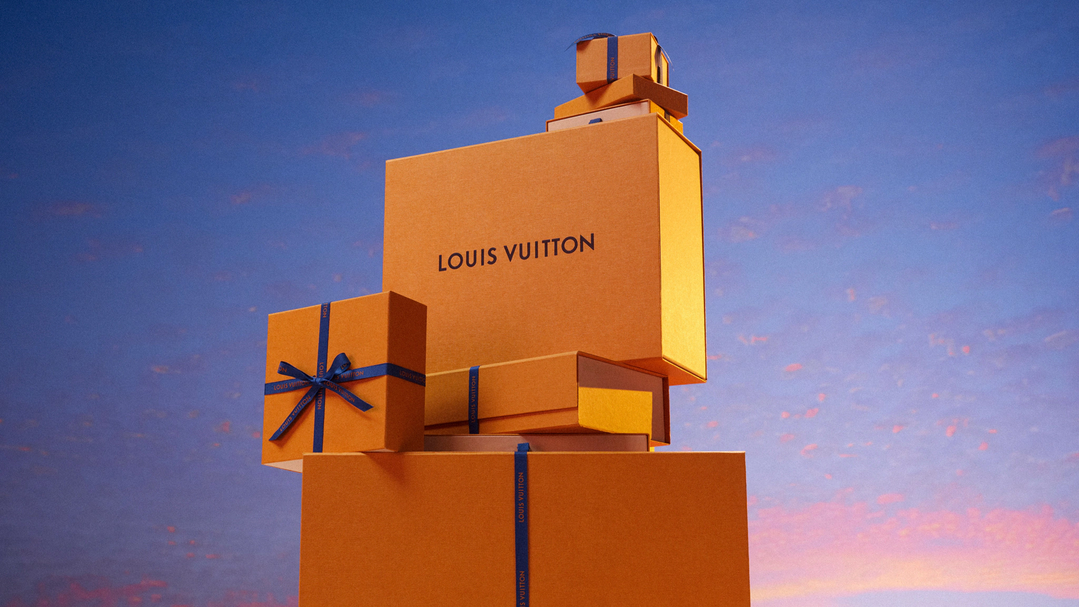
루이비통이 유명해지게 된 계기
루이비통이 유명해지게 된 계기는 여러 가지가 있지만, 그 중에서도 가장 큰 것은 루이비통이 개발한 트렁크(여행용 가방)입니다.
19세기 초반에는 여행가방으로 대개 나사 모양의 트렁크가 사용되었습니다. 이러한 트렁크는 여행 도중 짐을 잘 담을 수 있고, 보호할 수 있도록 디자인되었습니다. 그러나 이러한 트렁크는 대형이고 무겁기 때문에 이동이 불편했습니다. 또한 스팀기관이 발명되면서, 기차 여행이 보편화되면서 이러한 트렁크는 더욱 불편해졌습니다.
루이비통의 당시의 트렁크와 달리 가죽으로 만든 평평한 상자 형태 트렁크는 완전히 새로운 혁신이었습니다. 루이비통의 트렁크는 가죽이 부드러워서 내부에 물건을 안전하게 보관할 수 있을 뿐 아니라, 외부에는 코팅이 되어 있어서 물에 젖어도 상자 내부의 물건이 안전하게 보관될 수 있었습니다.
또한, 루이비통은 여행용 가방에서는 일반적이지 않았던 자물쇠를 개발하여 더욱 안전하게 보관할 수 있도록 했습니다. 이러한 혁신적인 디자인과 기능으로 루이비통은 많은 사람들의 관심을 받게 되었고, 세계적으로 유명한 브랜드가 되는 계기가 되었습니다.
2차 세계대전 기간 동안의 루이비통
2차 세계대전은 1939년 9월 1일 나치 독일의 폴란드 침공으로 시작하여 1945년 8월 15일 일본의 무조건 항복까지 이어진 대규모 국제 전쟁으로서, 약 6년 1개월 동안 진행되었습니다.
루이비통은 2차 세계대전 기간 중에도 군사용 품목을 제작해 전쟁에 참전했습니다. 그러나 독일군의 점령으로 인해 파리 공장은 닫혀 버렸습니다. 이후 루이비통은 프랑스 해방 후 다시 부활하였습니다. 2차 세계대전 이후에는 루이비통의 제품이 더욱 다양화되면서 의류, 액세서리, 가방, 시계 등 다양한 제품을 출시하게 되었습니다.
루이비통은 역사를 통해 다양한 변화를 겪었으며, 현재는 전 세계적으로 인기 있는 명품 브랜드 중 하나로 자리 잡았습니다. 그러나 브랜드의 인기와 성장과 함께, 브랜드의 이미지와 품질을 유지하기 위한 노력과 고객들의 요구를 충족시키는 노력도 함께 이어져 왔습니다.
루이비통은 고품질의 소재와 정교한 디자인으로 유명하지만, 브랜드 인기와 함께 모조품 등의 문제도 있습니다. 따라서 루이비통은 제품의 진위여부를 확인할 수 있는 방법을 마련하고 있으며, 공식적인 판매 채널을 통해서만 제품을 판매하고 있습니다.
루이비통과 2차 세계대전 참전한 명품 브랜드
2차 세계대전 기간 동안 다른 명품 브랜드들도 참전했습니다.
예를 들어, 샤넬은 2차 세계대전 당시 파리를 떠나고 스위스에 이주하며 모든 사업을 중단했습니다. 그러나 전쟁이 끝나면 1954년에 그녀는 컴백을 선언하며 "New Look"를 선보이며 성장하였습니다.
구찌는 2차 세계대전 당시 직원들이 전선에 참전하며 회사를 일시적으로 폐쇄하였습니다. 그러나 전쟁이 끝나면 회사를 재개하고 새로운 디자인과 브랜드 이미지를 발표하여 다시 성장했습니다.
반면에 헤르메스는 2차 세계대전 당시 프랑스의 국유화에 따라 국유화 되어 경영이 어려웠습니다. 그러나 전쟁이 끝나면 프랑스 정부의 국유화 정책이 전면 해제되어 헤르메스는 다시 성장했습니다.
그 외에도 여러 명품 브랜드들은 2차 세계대전 당시 전쟁의 영향을 받았지만, 전쟁이 끝나면 다시 성장할 수 있었습니다.
루이비통과 가족들
루이비통과 자녀들의 관계는 매우 복잡하고, 회사의 소유와 경영권은 오랜 기간 동안 여러 가지 이유로 여러 손에 넘어갔습니다.
루이비통의 창립자 루이비통과 그의 아내는 6명의 자녀를 두었습니다. 그 중 가장 유명한 인물은 루이비통의 장자 조르주 비통(Georges Vuitton)입니다.
조르주 비통(Georges Vuitton)는 아버지 루이비통이 시작한 가죽 상자 제작 공방을 이어 받아 혁신적인 디자인과 고객서비스를 통해 루이비통을 세계적인 럭셔리 브랜드로 성장시켰습니다.
조르주는 루이비통의 첫 대규모 판매네트워크를 구축하였고, 또한 물류 체계 개선, 상품 설계와 생산 방식의 혁신, 디자인을 통한 브랜드 이미지 개선 등 다양한 분야에서 기여를 했습니다. 특히, 루이비통의 상표인 LV 로고를 디자인한 것도 바로 조르주 비통입니다. 그는 혁신적인 디자인을 통해 루이비통의 전 세계적인 성장을 이끌었으며, 브랜드의 상징적인 존재로 자리 잡았습니다.
조르주 비통의 아들 가스톤 비통(Gaston Vuitton)은 루이비통을 비롯한 가방 및 가죽 제품 브랜드 전반의 발전에 큰 역할을 했습니다. 그는 루이비통의 확장에 앞장서며, 1896년에는 지금까지도 인기 있는 'LV' 모노그램을 만들었습니다. 또한, 가죽 제품 제작에 있어서 혁신적인 기술과 기법을 개발해 적용하여 루이비통 브랜드의 품질과 제조 기술을 끌어올렸습니다.
조르주 비통 가문에서는 그의 아들 가스톤 비통(Gaston Vuitton)이 사업을 이어나갔습니다. 그러나 19세기 말, 가스톤 비통이 사망하면서 조르주 비통 가문에서 다른 가문으로 소유권이 넘어갔습니다.
루이비통은 조르주 비통 가문에서만 운영되지 않았습니다. 조르주 비통은 자녀 중 하나인 클로빈 비통(Clovis Vuitton)과 함께 회사를 운영했으며, 조르주 비통의 손자인 가스톤-루이비통(Gaston-Louis Vuitton)도 회사 경영에 참여했습니다.
또한, 루이비통 가족 중 다수가 회사 경영에 참여하였으며, 회사의 경영권은 오랫동안 가족이 지켜왔습니다.
루이비통은 처음에는 조르주 비통 가문에서 시작했지만, 19세기 말에는 다른 가문으로 소유권이 이전되었습니다.
하지만, 1987년 루이비통은 LVMH(Louis Vuitton Moët Hennessy) 그룹에 인수되며 가족 경영의 역사는 종식되었습니다. LVMH는 세계적인 럭셔리 브랜드들을 보유한 대형 그룹 중 하나로, 루이비통 뿐만 아니라 다른 유명 브랜드들을 소유하고 있습니다.
한국에서 루이비통이 인기를 끈 계기
한국에서 루이비통이 인기를 끈 계기는 1990년대 초반인 1994년부터 1995년 사이입니다. 당시 한국의 대기업인 삼성그룹의 상속자인 이건희씨가 루이비통의 매장을 방문하면서 루이비통 제품을 착용하게 되었고, 이를 보고한 언론 매체들이 이건희씨의 패션 아이콘으로 루이비통 제품을 소개하면서 인기가 폭발했습니다. 이후로 한국에서 루이비통은 고급 브랜드의 대표적인 예시 중 하나로 자리 잡게 되었습니다.
한국에서 루이비통이 인기를 얻게 된 주요한 계기는 다음과 같습니다.
- 한류 열풍과 연관된 인기: 2000년대 이후 한류 열풍이 일고 한국인들의 외국 브랜드에 대한 관심도 높아졌습니다. 이에 따라 한국에서도 유명 브랜드들의 인기가 상승하게 되었고, 루이비통 또한 그 중 하나입니다.
- 대한민국 연예인들의 선호: 한국의 유명 연예인들이 루이비통 제품을 자주 착용하거나 사용하는 모습이 매체를 통해 공개되면서 브랜드의 인지도가 높아졌습니다. 특히 대중문화 분야에서 큰 영향력을 가진 K-pop 스타들이 루이비통 제품을 착용하거나 소지한 모습을 자주 보였습니다.
루이비통과 디자이너들
루이비통은 창업 이후 브랜드를 성장시키면서 다양한 디자이너와 협업했습니다.
그 중 가장 유명한 디자이너는 마크 제이콥스(Marc Jacobs)입니다. 1997년에 루이비통의 의류와 가방 라인의 아티스틱 디렉터로 입사한 마크 제이콥스는 브랜드의 이미지를 혁신시키는 데에 큰 역할을 했습니다. 그가 처음으로 선보인 루이비통의 청바지 컬렉션은 큰 성공을 거두며 브랜드의 이미지를 현대적이고 시대에 부합하도록 변화시켰습니다.
이 외에도 루이비통은 존 갈리아노(John Galliano), 마르지엘라(Martin Margiela), 니콜라 제스키에르(Nicolas Ghesquière) 등 다양한 디자이너와 협업하며 브랜드의 역사를 써 내려갔습니다.
마크 제이콥스(Marc Jacobs)는 1997년부터 2013년까지 약 16년간 루이비통의 아티스틱 디렉터로 일했습니다. 그는 루이비통의 제품 디자인 뿐 아니라 브랜드 이미지를 현대적이고 세련된 방향으로 변화시켰으며, 루이비통을 세계적인 명품 브랜드로 성장시키는 데 큰 역할을 했습니다. 또한 마크 제이콥스는 루이비통과 함께 선보인 많은 아이콘 제품들을 디자인한 인물로도 유명합니다.
마크 제이콥스는 미국 출신의 패션 디자이너로, 현재 자신의 이름으로 된 패션 브랜드인 Marc Jacobs를 운영하고 있습니다.
마크 제이콥스는 1963년 뉴욕에서 태어났으며, Parsons School of Design에서 공부한 후, Perry Ellis와 칼 라거펠트(Karl Lagerfeld) 등과 함께 일하며 경력을 쌓았습니다. 1984년, 그는 Robert Duffy와 함께 Marc Jacobs 브랜드를 창업하였고, 첫 컬렉션을 발표한 지 얼마 지나지 않아 뉴욕 패션계에서 큰 주목을 받았습니다.
마크 제이콥스는 Marc Jacobs 브랜드에서 다양한 의류와 액세서리 라인을 출시하고, 매년 뉴욕 패션위크에서 컬렉션을 선보이며 세계적인 패션 디자이너로 인정받고 있습니다.
1997년에는 브랜드 마크 제이콥스를 인수함과 동시에 그를 그룹의 총괄 디자이너로 임명하며 루이비통이 대격변을 맞기 시작한다. 일명 3초백으로 불리우는 PVC라인의 모노그램 가방을 대중화시키며 루이비통의 매출이 기하급수적으로 상승하여 지금의 규모까지 크게 되었다.
- 출처: 나무위키 -
존 갈리아노(John Galliano)는 영국 출신의 패션 디자이너로, 1997년부터 2011년까지 루이비통의 여성복 라인의 크레에이티브 디렉터로 활동했습니다. 그는 루이비통에서 여성복, 남성복, 악세사리 등의 제품군을 책임지며, 브랜드의 이미지와 역사를 고려한 디자인을 선보였습니다. 그러나 2011년 갈리아노는 반세미티즘 발언으로 인해 해고되었습니다.
마르지엘라(Martin Margiela)는 1988년 벨기에 예술아카데미인 안트베르펜(Antwerp)에서 공부한 후 파리로 이사하여 1997년부터 2003년까지 루이비통의 레디투웨어 부문의 크리에이티브 디렉터로 입사하여 다양한 제품들을 디자인하였습니다. 이때 마르지엘라가 디자인한 루이비통 제품에는 아래와 같은 것들이 있습니다.
- 1998년 "스프링 스몰러(Springsmaller)" 컬렉션
- 1999년 "사드 슈(Sad Shoe)" 및 "비어드 슈(Beard Shoe)"
- 2000년 "줌벌(Zoompilation)" 컬렉션
- 2001년 "예키(Yekey)" 백
- 2002년 "퀼트(Quilt)" 및 "노노(NoNo)" 백
- 2003년 "Cinq-à-Sept" 컬렉션
하지만, 마르지엘라는 2004년에 루이비통을 떠나고 그 후로는 다른 브랜드나 자신의 브랜드에서 활동하였습니다.
현재 마르지엘라는 자신의 이름을 따서 "Maison Margiela(메종 마르지엘라)" 라는 브랜드를 운영하고 있습니다. Maison Margiela는 프랑스 파리를 중심으로 활동하고 있으며, 의류, 악세서리, 가방 등 다양한 제품을 출시하고 있습니다.
특히 흰색 스티치와 숨겨진 디테일, 오버사이즈 핏, 비대칭적인 패턴 등의 특징이 있습니다. 마르지엘라는 2009년부터 이탈리아 럭셔리 그룹 OTB(Only the Brave)에 속해 있습니다. OTB(Only the Brave)는 Maison Margiela 이외에도 Marni, Diesel, Viktor&Rolf 등 다양한 브랜드를 보유하고 있습니다..
니콜라 제스키에르(Nicolas Ghesquière)는 프랑스의 패션 디자이너로, 1997년부터 2013년까지 발렌시아가(Balenciaga)의 크리에이티브 디렉터로 일했습니다. 발렌시아가에서는 대표적인 아이템인 '모터바이크 자켓'과 '크리스털 보텀 밀리터리 부츠' 등을 선보였으며, 그의 디자인은 전 세계적인 인기를 끌었습니다.
2013년부터는 루이비통(Louis Vuitton)의 아티스틱 디렉터로 일하며, 현재까지 루이비통의 여러 제품군을 선보이고 있습니다. 그의 디자인은 전통적인 루이비통의 이미지를 유지하면서도 혁신적인 변화를 줌으로써 전 세계적으로 사랑받고 있습니다.
루이비통과 아티스트
루이비통은 다양한 아티스트와 협업을 통해 유니크하면서도 트렌디한 제품을 선보이고 있습니다.
예를 들어, 일러스트레이터 제프 쿠른(Jeff Koons)과 협업하여 유명한 작품을 가방에 담아낸 "Masters" 시리즈 제품을 출시하기도 했습니다. 또한, 패션 디자이너 마지엘라는 미술가들과의 협업을 선호해 유명한 작가들의 작품을 패션 아이템에 적용한 적도 있습니다.
루이비통은 다양한 아티스트들과의 협업을 통해 새로운 아이디어와 디자인을 선보이고 있습니다. 몇몇 협업 사례를 아래에 나열해드립니다:
- 제프 쿤(Jeff Koons)
- 애쉬 리(Ashley Bickerton)
- 요요이 쿠스마(Nan Goldin)
- 스티븐 스피루스(Stephen Sprouse)
- 리차드 프린스(Richard Prince)
- 콜라보(Collaboration) 시리즈 - 푸마(Puma), 샤넬(Chanel), 스니커즈 앤 스텔라(Mr&Mrs Italy) 등 다양한 브랜드와 협업
이 외에도 루이비통은 다양한 분야의 아티스트들과 협업을 진행하고 있으며, 새로운 디자인과 아이디어를 선보이고 있습니다.
특히 루이비통은 2021년에 최근 K-팝 아이돌 방탄소년단과의 협업을 통해 전 세계적인 인기를 끌고 있습니다. 이번 협업은 루이비통의 2004년 출시한 아이콘 제품 '모노그램'을 모티브로 한 캡슐 컬렉션으로, 방탄소년단의 아티스트들과 함께 디자인한 제품들이 포함되어 있습니다. 이번 협업은 세계적인 인기를 얻은 방탄소년단의 팬층과 루이비통의 팬층을 모두 타겟으로 하고 있습니다.
루이비통과 유명인
루이비통은 세계적으로 많은 유명인들이 사랑하는 브랜드 중 하나입니다. 그 중에서도 일부 유명인들은 루이비통을 그들의 삶의 일부로 생각하고, 브랜드와 깊은 인연을 맺고 있습니다.
- 오드리 헵번 (Audrey Hepburn): 오드리 헵번은 루이비통의 열렬한 팬으로, 그녀의 대표적인 작품인 영화 '티파니에서 아침을'에서 착용한 루이비통의 백은 유명세를 타게 되었습니다. 이후 그녀는 루이비통과 함께한 광고 캠페인에도 출연하며 지속적으로 그들의 제품을 착용했습니다. 그녀는 자주 루이비통의 가방을 들고 나타나며, 특히 1960년대에는 루이비통의 트렁크와 가방을 자주 사용하여 그녀의 스타일 아이콘으로 자리 잡았습니다. 그녀와 루이비통 간의 인연은 1965년 루이비통의 디자이너인 피터 마린이 그녀를 위해 '스피디 25'라는 가방을 디자인한 것에서부터 시작됐습니다. 그 후 그녀는 루이비통과 평생의 계약을 맺어, 자신이 디자인한 루이비통의 가방 패턴도 남겼습니다.
- 브리짓 바르도(Bridget Bardot): 브리짓 바르도는 루이비통의 트렁크를 좋아했습니다. 특히, 그녀는 인쇄된 루이비통 로고가 트렁크에 새겨져 있는 것을 선호했습니다. 그녀는 루이비통 트렁크를 여러 개 소유했으며, 이를 이용해 다양한 여행을 즐겼습니다. 루이비통의 Noé 백을 자주 착용해 유명세를 타게 되었습니다. 그녀는 이 백을 토트백으로 사용하며 프랑스 영화 'And God Created Woman'에서도 착용했습니다.
- 존 F. 케네디(John F. Kennedy): 존 F. 케네디 대통령은 그의 아내인 잭리 O. 케네디와 함께 루이비통의 제품을 자주 착용했습니다. 특히, 그는 루이비통의 Keepall 백을 자주 사용했으며, 이 백은 이후 케네디 대통령의 이름으로 유명세를 타게 됩니다. 이는 비즈니스 출장에서 자주 이용하는 제품 중 하나였습니다.
- 마릴린 먼로(Marilyn Monroe): 마릴린 먼로는 영화 'The Seven Year Itch'에서 착용한 루이비통 드레스로 유명해졌습니다. 그녀는 이 드레스를 착용하며 뉴욕의 한 거리에서 포즈를 취하는 사진도 남겨져 있습니다.
- 셀린 디옹(Celine Dion): 셀린 디옹은 루이비통의 팬이며, 루이비통의 가방을 자주 소지하고 다니는 것으로 알려져 있습니다. 그녀는 루이비통의 '스피디' 백을 좋아하며, 다양한 컬러와 디자인의 '스피디' 백을 소유했습니다.
- 제니퍼 로페즈(Jennifer Lopez): 제니퍼 로페즈는 루이비통의 팬 중 한 명입니다. 그녀는 자주 루이비통의 가방과 의상을 착용하여 등장하는데, 특히 루이비통의 '모노그램(Monogram) 컬렉션'을 많이 사용합니다. 그녀는 루이비통의 모노그램 프린트를 입은 롱 부츠와 함께 등장한 적도 있습니다.
- 빅토리아 베컴(Victoria Beckham): 빅토리아 베컴은 루이비통과 오랫동안 협업해왔습니다. 특히 빅토리아 베컴은 루이비통의 '카퓌신 백(Capucines bag)'을 좋아합니다. 이 백은 루이비통이 출시한 최초의 여성용 핸드백 중 하나로, 프랑스 파리의 Capucines 거리에서 이름을 따온 것입니다. 이 백은 총 6가지 사이즈와 다양한 소재로 제작되어 있으며, 전면에 루이비통의 클래식한 몽그랑(Monogram) 패턴이 새겨져 있습니다.
- 브래드 피트 (Brad Pitt): 2012년 루이비통의 '코어' (Core Values) 캠페인에서 모델로 출연해 화제를 모았습니다. 이 캠페인에서는 브래드 피트가 야외에서 자연 속에서 촬영된 사진들이 사용되었으며, 그의 차분하고 솔직한 매력이 루이비통의 가치와 어우러졌습니다. 이후 브래드 피트는 2019년 루이비통의 'LV HORIZON' 캠페인에서 다시 한 번 브랜드와 협업했습니다.
- 앤젤리나 졸리(Angelina Jolie)도 루이비통의 팬 중 한 명으로 알려져 있습니다. 두 사람은 공동으로 루이비통의 'Jolie-Pitt' 가방을 디자인했으며, 이 가방의 수익금은 자선단체에 기부되었습니다.
- 케이트 미들턴(Kate Middleton): 케이트 미들턴은 왕실 구성원으로서 루이비통을 자주 착용합니다. 그녀는 루이비통의 클래식한 디자인을 좋아하며, 자신이 착용한 제품이 판매량을 높일 수 있다는 ‘케이트 미들턴 효과’를 일으키기도 합니다.
- 카이아 거버(Kaia Gerber): 카이아 거버는 최근 루이비통과의 협업으로 큰 주목을 받았습니다. 그녀는 루이비통과의 협업으로 새로운 컬렉션을 선보이며, 루이비통의 새로운 시대를 대표하는 모델 중 한 명으로 자리 잡았습니다.
- 블랙핑크(BLACKPINK): 2019년 4월, 블랙핑크의 멤버 로제가 루이비통의 여성용 향수 'Cœur Battant'의 홍보 모델로 발탁되었습니다. 그녀는 루이비통의 대표적인 팬 중 하나로, 자신의 SNS에서도 브랜드 제품을 자주 소개합니다.
- 리한나(Rihanna): 리한나는 루이비통과의 협업이 자주 있었으며, 그녀가 디자인한 루이비통 핸드백 라인 '리한나 컬렉션(Rihanna Collection)'은 인기를 끌었습니다. 또한 그녀는 2018년 메트 가라에서 루이비통 드레스를 입고 등장한 적이 있습니다.
- 방탄소년단(BTS): 방탄소년단은 루이비통과의 협업으로 유명합니다. 그들은 루이비통의 아이콘인 '모노그램'을 새로운 디자인으로 재해석하여 힙합 요소를 추가한 'LV x BTS' 컬렉션을 선보였습니다.
- 제이든 스미스(Jaden Smith): 제이든 스미스는 루이비통과 협업하여 지속 가능한 패션 라인 'New Classics'를 발표한 것으로 유명합니다. 이 라인은 지속 가능한 자원을 사용하여 제작되며, 세계적인 문제로 대두되고 있는 환경 문제에 대한 관심을 높이는데 목적이 있습니다.
- 수잔 서랜든(Susan Sarandon): 수잔 서랜든은 루이비통과 협업하여 소셜 미디어 캠페인 '캐비어 컬렉션(Caviar Collection)'을 선보인 것으로 유명합니다. 이 컬렉션은 루이비통의 전통적인 명품 아이템에 현대적인 요소를 더한 디자인으로, 캐비어를 모티브로 한 특별한 무늬가 돋보였습니다. 수잔 서랜든은 이 캠페인에서 모델로 참여했으며, 루이비통과의 협업에 대해 "루이비통은 나의 취향과 스타일을 완벽하게 반영하는 브랜드입니다. 무엇보다 브랜드의 전통과 역사에 큰 존경심을 느끼고 있습니다"라고 말했습니다.
- 미셸 오바마(Michelle Obama): 미쉘 오바마는 전미 대통령 바라크 오바마의 부인으로, 미국 역사상 처음으로 검은 색인 여성으로서 백악관의 제1부인 역할을 했습니다. 그녀는 2014년 루이비통의 '영혼 이전(Reboot)' 캠페인에 참여해 브랜드의 지속가능한 경영을 지원하는 메시지를 전했으며, 이후 루이비통의 제품을 자주 착용하면서 브랜드와의 관련이 더욱 깊어졌습니다.
- 에마 스톤(Emma Stone): 엠마 스톤은 할리우드 배우로, 루이비통의 앰버서더 중 한 명입니다. 그녀는 루이비통의 다양한 이벤트에 참여하면서 브랜드와의 관계를 이어가고 있으며, 2019년에는 루이비통의 '새로운 여행(New Journey)' 캠페인에서 주인공으로 나왔습니다.
이 외에도, 루이비통은 다양한 유명인들에게 사랑받고 있습니다.
루이비통과 남성복
루이비통은 1980년대 중반부터 남성복 라인을 선보였습니다. 초기에는 다른 럭셔리 브랜드들과 마찬가지로 주로 정장과 드레스 셔츠 등 위주로 제작되었지만, 이후 스트리트웨어와 스포츠웨어에 집중하면서 남성복 라인이 확장되었습니다.
루이비통 남성복의 디자이너들은 다양하며, 현재는 버질 아블로(Virgil Abloh)가 남성복 크리에이티브 디렉터로 활동하고 있습니다. 그 전에는 김 존스(Kim Jones)이 남성복 크리에이티브 디렉터로 활동하였습니다.
버질 아블로(Virgil Abloh)는 1980년 미국 일리노이주 로크포드(Rockford) 출신의 패션 디자이너이자 음악가입니다. 아블로는 일리노이대학교에서 건축학을 전공하였으며, 건축가, 패션 디자이너, 음악 프로듀서 등의 다양한 분야에서 활동하고 있습니다.
버질 아블로(Virgil Abloh)는 뉴욕 거리 패션 브랜드인 Pyrex Vision을 시작한 뒤, 2012년 의류 브랜드 Off-White을 창립하였습니다. Off-White은 스트리트 패션과 럭셔리한 감각을 결합한 스타일로 인기를 끌었습니다.
아블로는 오프 화이트(Off-White) 브랜드의 창립자이자 크리에이티브 디렉터이며, 2018년부터는 루이비통(Louis Vuitton)의 남성복 크리에이티브 디렉터를 맡고 있습니다.
김 존스(Kim Jones)는 영국 출신의 패션 디자이너로, 현재 디올(Dior) 남성복의 아티스틱 디렉터를 맡고 있습니다. 이전에는 루이비통(Louis Vuitton)의 남성복 디렉터로 일했으며, 버버리(Burberry), 알렉산더 맥퀸(Alexander McQueen), 던힐(Dunhill) 등에서도 활동했습니다. 그의 디자인은 전통적인 스타일과 현대적인 요소를 조화롭게 결합한 것으로 알려져 있습니다.
루이비통은 고급 남성복 브랜드로, 다양한 종류의 의류와 악세서리를 제공합니다. 수트, 셔츠, 카지날 웨어, 코트, 가죽 자켓, 청바지 등 다양한 의류를 제공하며, 가방, 신발, 모자, 스카프 등의 악세서리도 함께 판매합니다. 루이비통의 남성복 제품은 전통적인 스타일과 현대적인 감각이 결합되어 있으며, 최고급 소재와 정교한 디테일로 만들어집니다.
루이비통 2022년 연 매출 26조원 돌파
LVMH는 2023년 1월 26일(현지시간) 컨퍼런스콜에서 대표 브랜드인 루이비통 연간 매출이 200억 유로(2023년 3월 6일 기준, 약 26조 2900억 원)를 웃돌았다고 이례적으로 공개하기도 했다.
금융감독원 전자공시에 따르면 루이비통코리아유한회사의 2021년 매출액은 1조 4,680억 원으로 전년 1조 467억 원 대비 약 40% 늘었다. 지난해 영업이익은 3,019억원으로 전년(1,519억원) 대비 약 2배로 증가했다.
루이비통은 대량 생산 지양
루이비통은 대량 생산을 지양하며, 브랜드 이미지와 품질을 유지하기 위해 엄격한 품질 관리 시스템을 유지하고 있습니다. 제품 생산 과정에서는 고품질의 소재와 기술을 사용하며, 각각의 제품은 수작업으로 만들어집니다.
루이비통의 제품은 한정된 양으로 생산되며, 수요에 따라 공급량이 조절됩니다. 이러한 제조 방식은 고객들이 제품을 더욱 소중하게 여기게 되는 원인 중 하나입니다. 루이비통은 지속 가능한 생산을 실천하기 위해 노력하고 있으며, 고객들에게 지속 가능한 소비를 장려하는 노력도 함께 하고 있습니다.
루이비통도 일부 상품을 소각한 적이 있습니다. 2018년에는 루이비통이 파리 패션위크 기간에 소각할 상품을 모은 것으로 밝혀졌습니다. 이번 소각은 브랜드의 가치를 유지하기 위해 이루어졌으며, 환경 친화적인 방식으로 처리되었다고 밝혔습니다. 하지만 이에 대한 환경 보호단체들의 비판이 이어지면서, 루이비통은 더 이상 상품을 소각하지 않겠다는 선언을 내놓기도 했습니다.
-------------
Louis Vuitton was founded in 19th-century France. At the time, Louis Vuitton was a merchant seeking technically sophisticated methods for carrying luggage and travel bags. In 1854, he opened his first workshop in Paris, and the brand was subsequently named after its founder. As a skilled leather craftsman, Louis Vuitton specialized in crafting travel bags and trunks. While the company initially focused on manufacturing and selling travel-related products such as bags, luggage, and leather goods, it has since expanded its offerings to include handbags, wallets, apparel, accessories, and more.
Today, Louis Vuitton is part of the LVMH Group. Since its inception, the brand has gained popularity among prominent figures and, by the late 19th century, had established itself as a globally recognized name. One of its most iconic products, the bags adorned with the signature "LV" monogram, has become a symbol of luxury and style, attracting a loyal following with its diverse designs and color variations.
The Story of Louis Vuitton’s Origins
Louis Vuitton was born in 1821 in a small village in France. His early years were marked by hardship, as he worked near a well as a fisherman to support himself. However, he possessed both intelligence and an exceptional eye for fashion and leather craftsmanship. These innate talents, combined with his creative instincts, would eventually lead to the establishment of one of the world's most renowned fashion brands.
Growing up in a modest environment, Louis Vuitton left home at the age of 13 to pursue his aspirations in Paris. His primary motivation for leaving was to become an apprentice to a master leather craftsman.
The journey to Paris was arduous. While he could have traveled on foot or by carriage, walking such a long distance was both impractical and dangerous. Carriage travel required money—something his impoverished family could not provide.
Determined to achieve his dreams, Vuitton found ways to sustain himself by working alongside his equally impoverished siblings, scavenging for food and taking on odd jobs to survive. Despite these challenges, he never abandoned his ambition. At just 13 years old, he set off on his journey to Paris, enduring many hardships along the way but ultimately reaching his destination.
Upon arriving in Paris, he found work at a leather goods workshop, where he honed his craft.
At the age of 16, Vuitton secured a position at a Parisian company specializing in leather bags and travel trunks, known as "Parisian Underworld." There, he repaired and designed luggage for high-profile merchants and clients, gaining invaluable hands-on experience in leather craftsmanship and business operations. Through years of dedication and skill refinement, he laid the foundation for what would become one of the most prestigious luxury brands in history.
Parisian Underworld: The Hidden World of 19th-Century Parisian Craftsmanship
The "Parisian Underworld" was one of the leather goods companies that flourished in Paris from the late 19th to the early 20th century. However, as its name suggests, the company was known for operating through illicit means—manufacturing products without proper legal oversight and selling them through unregulated channels. It was widely believed to have been founded by individuals from Paris’s underground world, which was notorious for its criminal activities at the time.
The Parisian underworld refers to the hidden criminal society that developed in Paris during the 19th and early 20th centuries, a product of rapid urbanization and severe socioeconomic disparity. As the city’s population grew exponentially, so did its dark underbelly—a world teeming with crime and lawlessness.
By the late 19th century, this underground society had become the epicenter of illicit activity, populated by beggars, criminals, drug dealers, prostitutes, and gamblers. These individuals created their own set of rules and lived outside the boundaries of law and order, fostering a unique, self-sustaining ecosystem of illegality.
One of the most infamous areas within the Parisian underworld was the district located between the Saint-Vincent and Montmartre neighborhoods. This region became a refuge for those engaged in underground trades, including skilled artisans such as leatherworkers, bag makers, and shoemakers—many of whom had nowhere else to turn for employment.
It was in this environment that Parisian Underworld, a company specializing in leather bags, travel trunks, and hats, emerged.
Louis Vuitton’s Early Years in the Parisian Underworld
Louis Vuitton, seeking to refine his craft, began working at Parisian Underworld, where he specialized in manufacturing leather bags and travel accessories. During his tenure, he acquired invaluable expertise in leather craftsmanship, learning the intricacies of designing and producing high-quality travel goods. These formative years played a crucial role in shaping his vision and skills, ultimately laying the foundation for his future success.
The Official Louis Vuitton Narrative
According to Louis Vuitton’s official records, the legendary artisan’s journey began long before he founded his company.
In 1837, at the age of sixteen, Louis Vuitton arrived in Paris and started his apprenticeship under Monsieur Maréchal, a master craftsman specializing in travel trunks. At the time, carriages, ships, and trains were the primary means of transportation, and travel bags were often subjected to rough handling. Travelers sought skilled artisans who could create durable, functional trunks to safeguard their belongings.
Under Maréchal’s guidance, Vuitton quickly earned recognition for his craftsmanship. This experience became the foundation for his eventual success, as he learned not only the technical skills of bag-making but also the nuances of catering to an elite clientele.
By 1859, the town of Asnières had become synonymous with both Vuitton’s family residence and the birthplace of Maison Louis Vuitton. It was here that his craft evolved into a legacy of commercial and personal triumph.
The Birth of the Louis Vuitton Brand
In 1854, at the age of 33, Louis Vuitton founded his own company, naming it Louis Vuitton (LV). At the time of its inception, Vuitton had limited financial resources. However, relying on his mastery of bag-making and his keen sense of design, he started crafting products on a made-to-order basis.
He personally hand-crafted travel trunks and leather goods, gaining popularity for his exceptional design, quality, and functionality. The superior craftsmanship of his products quickly earned him a loyal clientele, and the brand steadily gained prestige.
Over time, Louis Vuitton evolved into a global luxury fashion house, synonymous with sophistication, innovation, and exclusivity. What began as a humble artisan’s workshop ultimately transformed into a worldwide fashion empire, forever changing the landscape of luxury travel goods.
Louis Vuitton’s First Product: The Trianon Trunk
Louis Vuitton's first product, the Trianon Trunk, was released in 1854 at a price of 34 francs. The trunk was crafted using high-quality leather and waterproof-coated canvas, with an interior reinforced with fiberglass, making it exceptionally durable and resistant to moisture. Thanks to this innovative design and superior craftsmanship, Vuitton quickly established a successful business.
The Stories Behind the Louis Vuitton Logo
There are various stories and legends surrounding the creation of the Louis Vuitton logo.
One of the most well-known anecdotes claims that Louis Vuitton himself requested a logo be designed to incorporate his name when he began crafting bags. However, since no concrete historical evidence supports this, the authenticity of this claim remains uncertain.
Another theory suggests that the logo was inspired by trunks introduced by Louis Vuitton in the late 19th century. At that time, Vuitton sought to protect customers’ personal information by incorporating unique patterns on the trunks. This system was initially designed to prevent disputes over ownership but later evolved into the distinctive LV monogram.
Beyond these theories, the Louis Vuitton logo carries multiple interpretations, reflecting its intricate design and symbolic value.
The Rise of Luxury Travel Culture and Its Influence on Louis Vuitton
The expansion of French capitalism in the 19th century led to the rise of luxury travel culture, which turned out to be a significant opportunity for Louis Vuitton. At the time, travel trunks were typically round and excessively heavy, making them impractical for rail or maritime transport, where storage space was limited.
Observing the construction of France’s first railway line, the Paris–Saint-Germain route, near his workshop, Louis Vuitton was inspired to revolutionize the design of travel trunks. In 1858, he introduced a groundbreaking flat-bottomed, rectangular trunk, known as the Grey Trianon Canvas Trunk.
Vuitton leveraged his childhood experience in woodworking and packaging, developing a lightweight yet highly durable trunk by treating canvas with waterproof glue. This practical, stackable design set his trunks apart from traditional models and swiftly gained recognition among Europe’s elite.
The Trianon Trunk attracted high-profile clientele, including Empress Eugénie of France, the Duke and Duchess of Windsor, Ernest Hemingway, and Douglas Fairbanks, further cementing Louis Vuitton’s reputation as the premier maker of luxury travel goods.
Expansion and Innovation
Following the success of his trunks, Louis Vuitton expanded his operations and, in 1859, established his first workshop in Asnières, located in central Paris.
This historic workshop still exists today, catering to exclusive custom orders from renowned figures such as British artist Damien Hirst, Olympic figure skater Yuna Kim, and crafting prestigious items like the FIFA World Cup Trophy Trunk.
The Battle Against Counterfeits: The Birth of the Damier Canvas
By 1888, the Grey Trianon Canvas had gained immense popularity, leading to a surge in counterfeit versions. In response, Louis Vuitton introduced the Damier Canvas, a checkerboard pattern designed to distinguish authentic Vuitton products from imitations.
The Value of 34 Francs in 1854
In 1854, 34 francs was considered a significant sum in France. Some contemporary comparisons include:
Victor Hugo’s novel "Notre-Dame de Paris" (The Hunchback of Notre-Dame): 12 francs
A sheet of orchestral music by Johann Strauss: 1 franc
A single cigarette: 0.10 francs
A doctor’s hourly consultation fee: 10–15 francs
This indicates that Louis Vuitton's Trianon Trunk was a luxury item, accessible only to the wealthy elite.
Who Bought Travel Trunks in 1854?
In the mid-19th century, trunks were essential for long journeys and relocations. The primary customers were:
European aristocrats and royalty
Affluent merchants
American pioneers and settlers
For the European nobility, long-distance travel was an integral part of their lifestyle. Given that nobles traveled with large amounts of luggage, Vuitton’s first trunks were meticulously designed to meet their needs, offering elegance, functionality, and superior craftsmanship.
Although Vuitton’s early clientele consisted primarily of aristocrats, the brand gradually gained widespread appeal, eventually evolving into a globally renowned luxury icon.
The Rise of Louis Vuitton: The Innovation That Made History
Louis Vuitton’s journey to worldwide recognition is attributed to several factors, but the most crucial was his revolutionary travel trunk.
In the early 19th century, bulky, rounded-top trunks with nail-studded exteriors were the standard choice for travelers. These trunks were designed to hold and protect belongings but were heavy and difficult to transport. As steam-powered trains became the dominant mode of travel, these traditional trunks became even more impractical.
Unlike these cumbersome models, Louis Vuitton introduced a game-changing flat-top leather trunk, offering a lightweight yet durable alternative. His trunks were made from soft leather, ensuring safety for stored items, while the coated canvas exterior provided waterproof protection.
Additionally, Vuitton developed an innovative locking system, an uncommon feature in travel bags at the time, further enhancing security. These design breakthroughs garnered significant attention, catapulting Louis Vuitton into international fame and setting the stage for its status as a luxury brand.
Louis Vuitton During World War II
World War II, which lasted from September 1, 1939, to August 15, 1945, was a global conflict that spanned over six years.
During this period, Louis Vuitton contributed to the war effort by producing military supplies. However, with the German occupation of France, the Paris workshop was forced to close. Following the liberation of France, the brand quickly regained its foothold and re-emerged in the post-war era.
After WWII, Louis Vuitton expanded its product range, branching into apparel, accessories, handbags, and watches, among other luxury items.
Despite its continuous growth, Louis Vuitton has faced challenges in maintaining its brand image and product quality. With its widespread success came an increase in counterfeit products, prompting the company to implement strict authentication measures and limit sales to official distribution channels.
Luxury Brands and Their Role in World War II
Louis Vuitton was not the only luxury brand affected by World War II. Several other high-end fashion houses also faced significant challenges:
Chanel: Coco Chanel ceased operations and relocated to Switzerland during the war. She returned in 1954, unveiling her famous "New Look", which redefined fashion in the post-war era.
Gucci: Many Gucci employees were drafted, leading to the temporary closure of the company. However, following the war, Gucci restructured its brand, introducing new designs and a refreshed brand identity that propelled its growth.
Hermès: The company was nationalized during the war, making management difficult. After the war, the French government lifted nationalization policies, allowing Hermès to reclaim its independence and regain momentum.
Despite the hardships of wartime, many luxury brands, including Louis Vuitton, rebounded and flourished in the post-war economy.
The Vuitton Family and the Evolution of Leadership
The history of the Vuitton family’s involvement in the company is complex, with ownership and leadership changing hands multiple times over the years.
Louis Vuitton, the founder, and his wife had six children, but the most significant figure in the brand’s history was Georges Vuitton, his eldest son.
Georges Vuitton: The Architect of Global Expansion
Georges Vuitton inherited the business after his father’s passing and played a crucial role in transforming Louis Vuitton into a global luxury brand.
He was responsible for:
Establishing the brand’s first large-scale sales network
Improving logistics and supply chains
Enhancing product design and production methods
Developing the iconic LV monogram to distinguish the brand from counterfeits
Georges Vuitton’s innovative contributions solidified Louis Vuitton’s status as a global luxury powerhouse.
Gaston Vuitton: The Innovator Behind the Monogram Canvas
Georges Vuitton’s son, Gaston Vuitton, played a pivotal role in expanding the company and further developing its leather goods line. In 1896, he introduced the "LV Monogram Canvas", which remains one of Louis Vuitton’s most recognizable symbols today.
He also advanced leatherworking techniques, enhancing the brand’s quality and craftsmanship.
The Transition Away from Family Ownership
Although Gaston Vuitton continued the family legacy, the ownership structure of Louis Vuitton gradually changed. By the late 19th century, control of the company had shifted beyond the Vuitton family.
While multiple generations of the Vuitton family were involved in the company’s management, the brand eventually moved out of direct family control.
In 1987, Louis Vuitton officially became part of the LVMH Group (Louis Vuitton Moët Hennessy), marking the end of the brand’s era as a family-run business. Today, LVMH is one of the world’s largest luxury conglomerates, housing numerous prestigious brands beyond Louis Vuitton.
The Rise of Louis Vuitton in South Korea
Louis Vuitton gained widespread popularity in South Korea between 1994 and 1995, marking a turning point for the brand in the country. One of the key moments that sparked this surge was when Lee Kun-hee, the chairman and heir of Samsung Group, was seen wearing Louis Vuitton products after visiting one of its stores. South Korean media outlets quickly picked up on this, presenting Louis Vuitton as a symbol of high-end fashion and luxury, which significantly boosted its popularity among the wealthy elite.
Several factors contributed to Louis Vuitton’s rapid success in South Korea:
The Korean Wave (Hallyu) and the Rise of Foreign Luxury Brands
With the global expansion of K-pop, K-dramas, and Korean culture in the early 2000s, interest in international brands grew among South Koreans. As consumers became more brand-conscious, Louis Vuitton emerged as a top luxury choice, benefiting from the association with South Korea’s growing global influence.
Celebrity Influence and Media Exposure
Korean celebrities, including K-pop idols and actors, frequently showcased Louis Vuitton products in public appearances, magazine shoots, and social media posts. The visibility of LV bags, wallets, and accessories in the entertainment industry significantly boosted the brand’s prestige and made it a must-have item for South Korean fashion enthusiasts.
Louis Vuitton and Its Collaborations with Designers
Since its founding, Louis Vuitton has worked with numerous influential designers, many of whom have played a crucial role in shaping the brand’s modern identity.
Marc Jacobs: The Creative Visionary (1997–2013)
One of the most iconic designers in Louis Vuitton’s history is Marc Jacobs, who joined as artistic director in 1997. His tenure brought a bold, contemporary edge to the brand, transforming Louis Vuitton into a fashion powerhouse beyond just luxury luggage.
Key contributions of Marc Jacobs:
Introduced Louis Vuitton’s first ready-to-wear collection
Revolutionized the monogram PVC handbags, making them a global sensation (nicknamed the "3-second bag" for its instant recognizability)
Designed trend-setting collaborations with artists like Takashi Murakami, Richard Prince, and Stephen Sprouse
Marc Jacobs was instrumental in modernizing Louis Vuitton, and under his leadership, the brand’s sales skyrocketed, solidifying its status as one of the most sought-after luxury labels worldwide.
Other Notable Designers Who Influenced Louis Vuitton
John Galliano (1997–2011)
British designer John Galliano was known for his extravagant and theatrical approach to fashion. During his tenure at Louis Vuitton, he contributed to womenswear and accessories, incorporating historical references and dramatic silhouettes.
However, he was dismissed in 2011 due to controversial remarks.
Martin Margiela (1997–2003)
Belgian avant-garde designer Martin Margiela briefly worked with Louis Vuitton’s ready-to-wear division. His contributions included:The "Springsmaller" collection (1998)
The "Sad Shoe" and "Beard Shoe" (1999)
The "Zoompilation" collection (2000)
After departing in 2004, he focused on his own brand, Maison Margiela, which continues to push the boundaries of deconstructed fashion.
Nicolas Ghesquière (2013–Present)
A renowned French designer, Ghesquière was the creative director at Balenciaga before joining Louis Vuitton in 2013.
Known for blending classic heritage with futuristic aesthetics, he introduced modernized silhouettes, bold patterns, and innovative materials to Louis Vuitton’s collections.
His work continues to push the boundaries of luxury fashion, keeping Louis Vuitton at the forefront of the industry.
The Louis Vuitton Phenomenon in South Korea Today
Today, Louis Vuitton is one of the most coveted luxury brands in South Korea, worn by celebrities, influencers, and high-status individuals. The brand continues to dominate in:
Luxury retail sales, with flagship stores in Seoul’s Gangnam and Apgujeong districts
Collaborations with K-pop stars, including partnerships with BTS, Blackpink, and other Korean fashion icons
Exclusive pop-up stores and cultural exhibitions, further reinforcing the brand’s elite status
From a symbol of aristocratic travel in the 19th century to a global luxury fashion icon, Louis Vuitton’s journey in South Korea showcases the brand’s ability to adapt, innovate, and maintain its relevance across generations.
Louis Vuitton and Artists: The Intersection of Fashion and Art
Louis Vuitton has long embraced collaborations with renowned artists, blending fashion, fine art, and craftsmanship to create unique, trendsetting collections. Through these partnerships, the brand has transformed luxury items into wearable art, elevating its identity beyond traditional fashion.
One of the most iconic examples is the "Masters" series in collaboration with Jeff Koons, where legendary artworks were incorporated into Louis Vuitton’s signature handbags. Similarly, designers like Martin Margiela have worked with artists to integrate contemporary art into fashion pieces, reinforcing Louis Vuitton’s reputation as an art-driven luxury house.
Below are some of Louis Vuitton’s most celebrated artistic collaborations:
Key Artist Collaborations
Jeff Koons – The "Masters" collection, featuring reimagined versions of Da Vinci, Van Gogh, and Monet’s artworks on handbags
Yayoi Kusama – A surreal polka-dot-infused collection blending Kusama’s signature motifs with Louis Vuitton’s craftsmanship
Richard Prince – The "Joke" series, incorporating conceptual humor and pop art into the Monogram canvas
Stephen Sprouse – Graffiti-style monogram prints, merging street art with high fashion
Takashi Murakami – The iconic Multicolore Monogram, blending anime-inspired aesthetics with LV heritage
Louis Vuitton has also collaborated with other major brands such as Puma, Chanel, and Mr. & Mrs. Italy, further expanding its artistic influence.
Louis Vuitton and K-Pop: The BTS Collaboration
In 2021, Louis Vuitton took a significant step into global pop culture by collaborating with BTS, the world’s most influential K-pop group. This partnership resulted in a special capsule collection, featuring reimagined Monogram designs that incorporated BTS’s artistic vision and hip-hop-inspired elements.
This collaboration bridged high fashion and global pop culture, attracting both LV’s loyal clientele and BTS’s massive global fanbase.
Louis Vuitton and Celebrity Icons
Louis Vuitton has maintained strong connections with Hollywood celebrities, musicians, and public figures, many of whom have played a key role in shaping the brand’s cultural influence.
Classic Hollywood & Style Icons
Audrey Hepburn – A devoted Louis Vuitton fan; famously carried a custom-designed Speedy 25
Brigitte Bardot – Loved Louis Vuitton’s Noé bag and signature trunks, featured in French films
Marilyn Monroe – Associated with a custom Louis Vuitton dress in The Seven Year Itch
Political & Royal Figures
John F. Kennedy & Jackie Kennedy – Used Louis Vuitton’s Keepall bag, which became synonymous with business travel luxury
Kate Middleton – Frequently seen with Louis Vuitton, contributing to the "Kate Middleton Effect", boosting sales
Michelle Obama – Participated in LV’s sustainable fashion campaign, advocating ethical luxury
Contemporary Celebrities & Fashion Icons
Celine Dion – Owns multiple Louis Vuitton Speedy bags
Victoria Beckham – A longtime LV supporter, particularly fond of the Capucines bag
Jennifer Lopez – Frequently wears Monogram collection pieces, including custom boots and handbags
Brad Pitt & Angelina Jolie – Starred in Louis Vuitton’s "Core Values" campaign and designed the "Jolie-Pitt" bag for charity
Emma Stone – Featured as a brand ambassador in LV’s "New Journey" campaign
Fashion & Music Industry Figures
Blackpink’s Rosé – Became the face of LV’s Cœur Battant fragrance
Rihanna – Created her own LV handbag collection and showcased custom Louis Vuitton dresses at the Met Gala
Jaden Smith – Designed LV’s eco-conscious New Classics collection
Susan Sarandon – Modeled for the Caviar Collection, blending traditional luxury with modern design
From old Hollywood legends to modern-day K-pop icons, Louis Vuitton continues to transcend generations and cultures, reinforcing its status as the ultimate symbol of luxury and artistic innovation.
Louis Vuitton and Menswear: A Legacy of Luxury and Innovation
Louis Vuitton’s menswear division has evolved significantly since its introduction in the mid-1980s. Initially focused on classic tailoring, including suits and dress shirts, the brand later expanded into streetwear and sportswear, reflecting the shifting landscape of modern men’s fashion.
Louis Vuitton has entrusted its menswear line to some of the industry’s most influential designers, including Kim Jones and Virgil Abloh, both of whom played a pivotal role in shaping the brand’s contemporary aesthetic.
Key Figures in Louis Vuitton Menswear
Virgil Abloh (2018–2021): Redefining Luxury Streetwear
The late Virgil Abloh, an American fashion designer, artist, and music producer, was born in Rockford, Illinois, in 1980. With a background in architecture from the University of Illinois, Abloh’s career spanned multiple creative disciplines.
Founded Pyrex Vision, a New York-based streetwear label
Launched Off-White in 2012, pioneering the fusion of luxury and streetwear
Became Louis Vuitton’s Men's Creative Director in 2018, making history as the first Black designer to hold the position
Abloh’s tenure at Louis Vuitton revolutionized menswear, introducing bold streetwear aesthetics, cultural references, and youth-driven influences to the traditionally formal luxury house. His collections incorporated oversized silhouettes, vibrant colors, and deconstructed tailoring, positioning Louis Vuitton at the forefront of luxury street fashion.
Kim Jones (2011–2018): A Fusion of Tradition and Modernity
Before Abloh, Kim Jones, a British designer, served as Louis Vuitton’s Men's Artistic Director from 2011 to 2018. Jones is known for seamlessly blending heritage tailoring with contemporary trends, making him a leading figure in modern menswear.
Worked for Burberry, Alexander McQueen, and Dunhill before joining Louis Vuitton
Transformed Louis Vuitton’s menswear by integrating sportswear, travel-ready pieces, and bold patterns
Led the groundbreaking collaboration with Supreme in 2017, which became one of the most successful luxury-streetwear partnerships in history
Following his departure from Louis Vuitton, Kim Jones became the Artistic Director of Dior Men, continuing to push the boundaries of high-end menswear.
Louis Vuitton’s Menswear Offerings
Louis Vuitton’s menswear collection is synonymous with sophistication, craftsmanship, and modernity. The brand offers a diverse range of luxury pieces, including:
Tailored suits and dress shirts
Casual and urban wear, including denim, jackets, and hoodies
High-quality leather goods, such as bags, wallets, and belts
Luxury footwear, including sneakers and dress shoes
Accessories, including hats, scarves, sunglasses, and jewelry
Louis Vuitton’s menswear combines timeless elegance with contemporary influences, ensuring its appeal across multiple generations of style-conscious consumers.
Louis Vuitton’s Financial Success in Menswear & Beyond
Louis Vuitton continues to dominate the luxury fashion industry, with its financial growth reflecting its unwavering popularity.
In 2022, Louis Vuitton’s annual revenue surpassed €20 billion ($26 billion USD), a record-breaking figure disclosed by LVMH in a conference call on January 26, 2023.
In South Korea, Louis Vuitton Korea’s 2021 revenue reached ₩1.468 trillion (approx. $1.1 billion USD), a 40% increase from the previous year.
Operating profit nearly doubled, growing from ₩151.9 billion ($120 million USD) in 2020 to ₩301.9 billion ($238 million USD) in 2021.
Louis Vuitton’s menswear division has played a key role in this expansion, attracting younger generations through trend-driven collections, innovative collaborations, and exclusive limited editions.
The Brand’s Commitment to Craftsmanship & Sustainability
Unlike many other luxury brands, Louis Vuitton rejects mass production, ensuring meticulous craftsmanship and limited supply to maintain exclusivity.
The brand upholds a rigorous quality control system, using only the finest materials and traditional artisanal techniques.
Production is carefully scaled according to demand, reinforcing the rarity and desirability of its products.
Sustainability initiatives have been introduced, encouraging consumers toward conscious luxury consumption.
Controversy Over Product Destruction
Louis Vuitton has, on occasion, destroyed unsold goods to maintain its exclusive brand image.
In 2018, reports surfaced that the brand collected unsold inventory for incineration during Paris Fashion Week.
While Louis Vuitton claimed these measures were environmentally responsible, backlash from environmental activists prompted the brand to reassess its approach.
In response to criticism, Louis Vuitton pledged to reduce waste and enhance its sustainability practices moving forward.
The Future of Louis Vuitton Menswear
With Virgil Abloh’s lasting influence, Kim Jones’ refined aesthetic, and a strong heritage of craftsmanship, Louis Vuitton’s menswear division remains at the forefront of modern luxury fashion.
As the brand continues to blend tradition with innovation, it secures its position as a global leader in high-end menswear, attracting fashion-forward consumers while maintaining its legacy of excellence.
[저작권자ⓒ META-X. 무단전재-재배포 금지]














